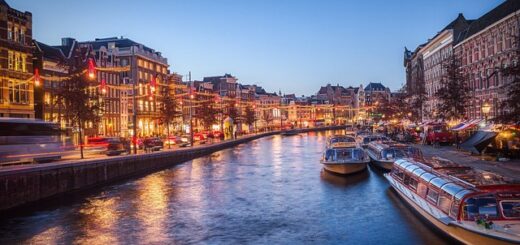Discover the History of Barcelona Cathedral
Barcelona Cathedral, also known as the Cathedral of the Holy Cross and Saint Eulalia, stands majestically in the heart of Barcelona’s Gothic Quarter. This architectural masterpiece is not only a symbol of religious devotion but also a testament to the city’s rich history and cultural heritage.
With its awe-inspiring facade and intricate details, the Cathedral of Barcelona has attracted countless visitors over the centuries. With Cathedral of Barcelona tickets embark on a captivating journey through time to explore the origins, construction, artistic treasures, and significance of this remarkable landmark.
The history of Barcelona Cathedral is a testament to the perseverance, artistic vision, and faith of the people of Barcelona. From its humble beginnings to its grandeur today, the cathedral stands as a remarkable testament to the city’s cultural and religious heritage.
Its construction spanned centuries witnessed numerous restorations, and survived the challenges of time, wars, and changing architectural styles.

I. The Origins
The origins of Barcelona Cathedral can be traced back to the 13th century when the city’s ancient Romanesque cathedral, built in the 11th century, could no longer accommodate the growing population. In 1298, King James II of Aragon laid the foundation stone for a new Gothic cathedral, which would honor the city’s patron saint, Eulalia. The construction began under the guidance of architect Berenguer de Montagut, who incorporated elements of the Catalan Gothic style into the design.
II. The Construction and Evolution
The construction of Barcelona Cathedral progressed slowly due to various factors such as wars, plagues, and financial constraints. Over the centuries, multiple architects contributed to the development of the cathedral, each leaving their mark on the structure. The central nave, side chapels, and the main façade were gradually added, exhibiting a mix of architectural styles, including Gothic, Renaissance, and neo-Gothic.
One of the highlights of the cathedral is its stunning cloister, built between the 14th and 15th centuries. Known for its serene beauty and impressive collection of sculptures, the cloister serves as a peaceful oasis amidst the bustling city. Additionally, the rooftop terraces offer breathtaking panoramic views of Barcelona, showcasing the remarkable combination of architectural magnificence and natural beauty.
III. Legends and Symbolism
Barcelona Cathedral is steeped in legends and symbolism that have captured the imagination of locals and visitors alike. One such legend revolves around the thirteen white geese residing within the cathedral’s cloister. According to tradition, these geese represent the age of Saint Eulalia when she suffered martyrdom.
Moreover, the cathedral’s façade is adorned with intricate stone carvings depicting biblical scenes, saints, and mythical creatures. These elaborate sculptures hold symbolic meanings, illustrating religious narratives and moral teachings. The famous gargoyles and grotesque figures adorning the exterior walls not only served as decorative elements but were also believed to ward off evil spirits.
IV. Restoration and Preservation
Like many ancient structures, Barcelona Cathedral has undergone several restorations and preservation efforts to ensure its longevity. In the 19th century, architect Francisco de Paula del Villar initiated a significant restoration project to revive the original Gothic style of the cathedral. However, this project was later abandoned due to disagreements over the restoration approach.
Subsequently, architect Josep Oriol Mestres took charge and continued the restoration work in the early 20th century. His efforts focused on consolidating the existing structure and incorporating elements of neo-Gothic design. The restoration process aimed to recover the original splendor of the cathedral while adapting to the evolving architectural trends of the time.
V. Significance and Legacy
Barcelona Cathedral holds great significance not only for the religious community but also as a cultural and historical landmark. It serves as a testament to the enduring faith of the people of Barcelona and stands as a visual representation of the city’s rich past. The cathedral has witnessed numerous significant events throughout history, including royal coronations, religious ceremonies, and political gatherings.
Today, Barcelona Cathedral continues to be a place of worship, attracting locals and tourists from around the world. Its magnificent architecture, ornate interiors, and religious artifacts make it a must-visit destination for those seeking to explore the city’s history and culture. The cathedral also hosts regular religious services, including Masses and religious festivals, further emphasizing its ongoing role as a spiritual center.
Conclusion
The cathedral’s architecture, with its blend of Gothic, Renaissance, and neo-Gothic elements, showcases the evolution of architectural styles and techniques over the centuries. Its iconic features, such as the cloister and the rooftop terraces, offer visitors a glimpse into the past while providing breathtaking views of present-day Barcelona.
As an enduring symbol of Barcelona, the cathedral’s legacy extends far beyond its religious significance. It serves as a vibrant cultural hub, hosting events and exhibitions that celebrate the city’s artistic spirit. Its architectural influence can be seen in structures around the world, solidifying its place in the annals of architectural history.
Barcelona Cathedral remains an iconic landmark, cherished by locals and admired by visitors, as it continues to inspire awe and reverence through its timeless beauty and spiritual aura.
Don’t forget to check our other travel guides to get more such useful information.



















